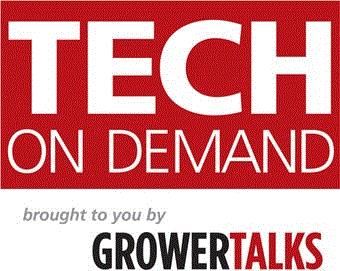Real Organic Project Officially a Label
In 2018, the Real Organic Project launched a pilot program to certify organic farms to a new level—above and beyond the USDA’s National Organic Program. They just announced that their label is officially released, with nearly 500 farms certified.
The add-on label was a reaction to the National Organic Standards Board voting to recommend that hydroponic production be allowed to be certified organic. (It’s not allowed in most countries but the U.S. has struggled with the definition for years, and the vote served as the final straw for many who felt the original meaning of organic had become diluted by the National Organic Program.)
As you might surmise, the
Real Organic Project requires crops to be grown in soil, and they have a number of other parameters for animal welfare.
I have no numbers on what percentage of the organic market those nearly 500 Real Organic farms represent, so I can’t tell you how easy it will be for consumers to find the Real Organic Project label as it hits the market. They say the marketing effort will come from the farmers themselves—just as it did when farmers spread the word of organics the first time around.
In an email to their supporters, the Real Organic Project stated, “Organic farmers understand that soil health, crop health, animal health and planetary health are intimately connected. The Real Organic Project will exist until the USDA National Organic Program understands that too.”
Sidenote: They’ll be hosting the Real Organic Symposium, with a series of talks and live panels every Sunday in January 2021. More info at realorganicsymposium.org.

Headed to GreenTech
My suitcase may feel abandoned, but I’ve got to say, if you don’t normally have time to travel to a lot of industry events, the virtual thing has its adventages. (Heck, I zoomed into an event last weekend while sitting in my camper at pheasant camp.)
What am I going to check out next week? GreenTech, which usually requires a trip to the Netherlands. Granted, I am now planning the live education sessions I attend around the 8-hour time difference. But there are some great sessions you may want to check out on technology and horticulture, how to manage water scarcity, geothermal greenhouses, vertical farming, and more. There’s a virtual tradeshow, too. Plus, they’ll be showcasing the finalists for the GreenTech Innovation Awards—offering solutions to some of our industry’s toughest problems.
Ball Tech on Demand
And here’s one more virtual resource for you—straight from Ball Publishing. Every Tuesday and Thursday in October, we’re giving you 30 minutes of free, high quality crop culture training and education from Ball Tech On Demand.

The goal is to enhance your greenhouse production team’s cultural and technical knowledge. You’ll learn the latest on sanitation, watering and plant nutrition, and dive deep into core crops like impatiens, calibrachoa and perennial crops. (We call it “In the Breakroom” because it’s the perfect thing to watch or listen to over your midday sandwich.)
Who Can Eat Local?
Eating local may seem easy in a lot of places, but eating local veggies in the summer is a far cry from sourcing all your food locally (and realizing the sustainability benefits of local sourcing). Can U.S. metro areas grow all the food they need? That’s the question that researchers at Tufts University attempted to answer in a modeling study.
They looked at 378 metropolitan areas and evaluated whether they could meet their food needs from local agricultural land within 155 miles. (They evaluated this for seven different diet types.)
As you might expect, the Northwest and interior parts of the country showed the greatest potential for localization while the eastern seaboard and southwest had the least potential. They did find that by reducing animal products, the potential to source food locally increased, up to a point.
Survey Time (Win a Yeti Cooler)
It’s that time of year again: we want to know what your wage and benefits structure looks like. If you have a greenhouse or a retail operation, please fill out one of these easy-to-answer surveys:
We always add a little incentive to the mix and this year it’s a Yeti cooler. (I can vouch that these rather expensive “ice boxes” will keep ice for a week while sitting in the back of a hot truck—learned when I had a cold beer greet me in said cooler at the end of a week-long canoe trip in the Boundary Waters Wilderness.) So if you want a chance to win a Yeti, make sure you leave your email at the end of the survey so we can contact you if you win! The survey closes October 19, so don't delay!
Special thanks to our survey sponsor Florasearch.
Until next time,

Jennifer Duffield White
jwhite@ballpublishing.com
This email received by 23,202 loyal readers!
Want to be one of the lucky sponsors who reach those readers of GreenTalks? Drop Paul Black a line and he’ll tell you what a bargain it is!
GreenTalks® is a registered trademark of Ball Horticultural Company in the U.S.